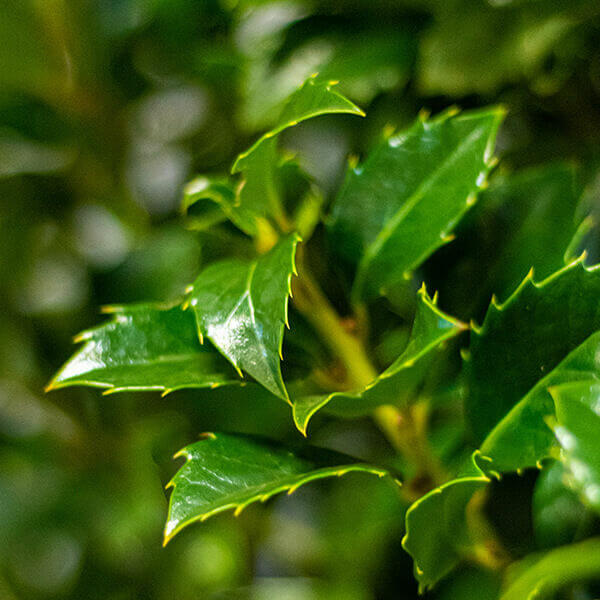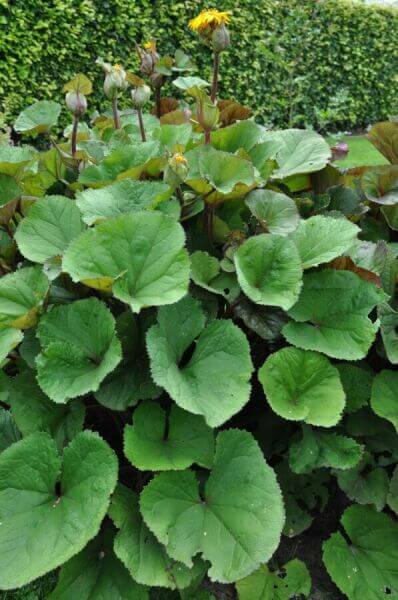Hedging Plants For Clay Soil
Hedging Plants For Clay Soil
Blog Article
Hedge Plants For Innovative Gardens
Improve your garden's attraction with lavish hedge varieties such as Yew (Taxus), Thuja, Laurel, Photinia, and Bamboo, commemorated for their structural integrity and environmental benefits.
Yew and Thuja provide evergreen coverage and winter resilience, while Laurel provides fast development and broad, aromatic leaves.
Photinia includes seasonal charm with its vibrant red foliage, and Bamboo provides a low-maintenance, tranquil atmosphere.
These hedges improve air quality, minimize sound, and develop tranquil, private spaces.
Proper planting, spacing, and upkeep ensure vigorous growth and ecological consistency.
Check out how these lavish ranges can elevate your garden's charm and wellness.
Key Takeaways
Transform Your Garden With Lush Hedge Ranges
- Select Yew for its thick, evergreen growth and exceptional durability.
- Choose Laurel for its quick growth and broad leaves, guaranteeing quick privacy.
- Select Photinia for its vibrant seasonal foliage, which turns a striking dark red.
- Use Bamboo for a low-maintenance, winter-hardy hedge with aesthetic appeal.
- Area plants 2-3 per meter and prune regularly for optimal development and health.
Popular Hedge Plants
When changing a garden with lush hedge varieties, it's necessary to consider popular hedge plants such as Yew, Thuja, Laurel, and Photinia due to their special qualities and advantages.
Yew (Taxus) is highly esteemed for its durability and dense, green development, making it a prime option for enduring landscapes.
Thuja is kept in mind for its evergreen foliage and robust winter durability.
Photinia adds seasonal vibrancy with red leaves that darken with time, creating dynamic visual appeal.
Laurel provides fast growth and fragrant, broad leaves, perfect for quick privacy.
Additionally, Bamboo is an excellent option for atmosphere, offering a low-maintenance, winter-hardy option that enhances the garden's aesthetic with its stylish, swaying canes.
These choices accommodate a range of horticultural requirements and choices.
Benefits of Garden Hedges
Garden hedges use a wide range of benefits, making them an important addition to any landscape. These natural barriers are economical to execute and provide substantial wind protection, boosting air blood circulation and contributing to noise reduction. The dense foliage of hedges like Thuja and Beech ensures personal privacy by obstructing presence, developing a tranquil and remote environment.
Hedges also play a vital function in microclimate policy, supplying a steady environment that fosters plant growth and decreases temperature variations. Their intricate leaf structures filter toxins, improving air quality and contributing to a healthier garden community.
Furthermore, hedges stand out in sound decrease, taking in and deflecting sound waves to lower ambient noise levels. This dual functionality of supplying both acoustic and visual privacy improves the general serenity and aesthetic appeal of any garden.
Planting and Maintenance Tips
For an effective hedge, careful preparation of the planting location is important. Guarantee the soil has appropriate pH and drainage to support strong root development.
Space the plants properly for the picked types. Water the hedge regularly throughout its preliminary development phase, adjusting as required with seasonal modifications.
Carry out a methodical bug control and illness prevention method, using chemical or organic treatments when necessary. Routinely inspect for aphids, mites, and fungal infections.
Apply mulch to keep moisture and reduce weeds. Seasonal pruning promotes thick growth and air circulation, important for plant health.
Following these guidelines will assist you cultivate a lively, well-kept hedge that boosts the charm of your garden.
Spacing and Trimming Standards
Spacing and Trimming Standards
Proper spacing and cutting are vital for cultivating healthy, aesthetically appealing hedges. Adequate spacing guarantees each plant receives enough nutrients, light, and airflow.
Follow these guidelines for optimal hedge maintenance:
- Spacing: Position hedge plants 2-3 plants per meter to encourage robust development.
- Pruning Strategies: Routine pruning is necessary for maintaining wanted hedge height and shape. Trim brand-new development in summertime and cut down older wood throughout winter season.
- Seasonal Care: Adjust cutting schedules and techniques according to seasonal requirements to make sure plant health.
- Hedge Height: Frequently monitor and trim to maintain the wanted hedge height and achieve consistent visual appeals.
Following these steps will guarantee your hedge thrives, boosting both the appeal and functionality of your garden.
Selecting the Right Hedge
Picking the Right Hedge
Selecting the appropriate hedge includes examining elements such as fully grown height, foliage density, and ecological resilience. Successful hedge plant choice needs comprehending each species' development qualities and site-specific adaptability.
For example, Yew (Taxus) provides outstanding longevity and dense development, while Thuja is notable for its winter durability. Additionally, thinking about upkeep requirements is vital; fast-growing types like Laurel or Privet demand regular trimming, whereas low-maintenance alternatives like Bamboo or Ivy might be preferable for those looking for minimal maintenance.
Environmental aspects such as soil type, light availability, and moisture conditions need to likewise direct the selection procedure. This careful technique makes sure the chosen hedges will thrive, offering both visual and functional benefits to the garden landscape.
Shipment and Planting Advice
To ensure your hedge plants prosper, they need to be provided by specialized carriers and planted quickly upon arrival.
Follow these necessary steps for successful planting:
- Soil Preparation: Enrich the soil with natural matter to improve drainage and nutrient material.
- Planting Depth: Develop a trench two times the width and equal to the depth of the root ball.
- Watering Techniques: Water completely after planting, keeping the soil regularly damp however not filled.
- Mulching: Use a layer of mulch to maintain wetness and suppress weeds.
Consumer Assistance and Service
Provided the important function of timely assistance in horticultural pursuits, our customer assistance team is offered 6 days a week through telephone, email, and social networks to use skilled guidance and quickly resolve any concerns. Their devotion to quick response times ensures customer complete satisfaction by dealing with inquiries connected to plant health, optimum planting techniques, and maintenance schedules.

-----------------
Six days a week
Email
This comprehensive assistance system, enhanced by a stellar 9.3/ 10 client ranking, highlights our commitment to enhancing the gardening experience for each customer.
Often Asked Questions
How Long Does It Take for Hedge Plants to Establish?
Hedge plants generally need one to three years to end up being fully established, with the precise duration varying by species and growing conditions.
Reliable care during this critical period is important for robust growth. Constant watering, vigilant weed control, and suitable fertilizer application are critical in promoting strong root development.
For example, fast-growing species like Laurel might develop faster, while slower-growing varieties such as Yew may take longer. Diligent upkeep speeds up the facility process, leading to healthy and thick hedges.
What Are the very best Hedge Plants for Privacy?
The concern of the finest hedge plants for privacy involves assessing evergreen and deciduous options.
Evergreen hedges like Thuja, Laurel, and Cypress provide year-round coverage, guaranteeing constant privacy.
On the other hand, deciduous hedges such as Beech offer seasonal personal privacy, shedding leaves in cooler months.
Secret maintenance pointers for personal privacy hedges include routine trimming, fertilizing in spring, and appropriate spacing-- generally 2 to 3 plants per meter.
Furthermore, consistent watering and diligent weed elimination are vital for promoting healthy, thick growth.
Can Hedge Plants Draw In Wildlife to My Garden?
Yes, hedge plants can bring in wildlife to your garden by providing essential benefits like shelter, food, and nesting websites, thereby enhancing local biodiversity. Yew, holly, and laurel are exceptional for attracting birds, while ivy supports a variety of insects.
Nevertheless, it is essential to keep in mind that there are some disadvantages, such as increased upkeep to manage bugs and regular maintenance. Thoroughly choosing and keeping hedge varieties can help balance these drawbacks and benefits, eventually cultivating a dynamic and sustainable community in your garden.
Are There Any Flowering Hedge Plants Available?
Yes, there are flowering hedge plants offered that can improve the beauty of your garden.
For example, Elaeagnus, likewise called Olive Willow, produces Article source aromatic white flowers in the fall, adding a touch of elegance.
Photinia, another popular choice, showcases lively red leaves that mature into an abundant green, creating a dynamic visual effect throughout the seasons.
To make sure these plants grow, it's important to practice correct pruning techniques and seasonal upkeep, such as trimming new growth in the summertime and cutting back in the winter.
These procedures will help preserve the health and aesthetic appeal of your blooming hedges.
How Do I Avoid Pests in My Hedge Plants?
To prevent insects in hedge plants, use natural bug control methods and maintain appropriate hedge care. Present advantageous bugs like ladybugs, which take advantage of hazardous bugs, to produce a well balanced environment.
Frequently examine your hedges for indications of invasion and immediately get rid of any afflicted parts to avoid the spread. Guarantee the health of your hedges by using well balanced fertilizers and providing adequate water.
Utilize mulching to retain soil moisture and correct spacing to reduce plant stress and promote robust development. These practices collectively help in reducing bug concerns and preserving a healthy hedge.
Conclusion
In essence, selecting the right hedge varieties such as Yew, Thuja, and Laurel can change any garden into a serene sanctuary. These plants provide year-round greenery, improve aesthetic appeal, and offer practical advantages like noise reduction and wind defense.
Appropriate planting techniques, accurate spacing, constant watering, and seasonal trimming are vital for optimum development.
Trustworthy delivery services and skilled client support make sure a seamless experience from purchase to planting, making it easier than ever to raise your outside space.
Garden hedges offer a plethora of benefits, making them an important addition to any landscape. These natural barriers are cost-effective to implement and supply substantial wind defense, enhancing air blood circulation and contributing to noise decrease. The dense foliage of hedges like Thuja and Beech makes sure personal privacy by obstructing exposure, creating a remote and serene environment.

Pruning Strategies: Routine pruning is vital for preserving desired hedge height and shape. Cut brand-new growth in summer and cut back older wood throughout winter.
Report this page